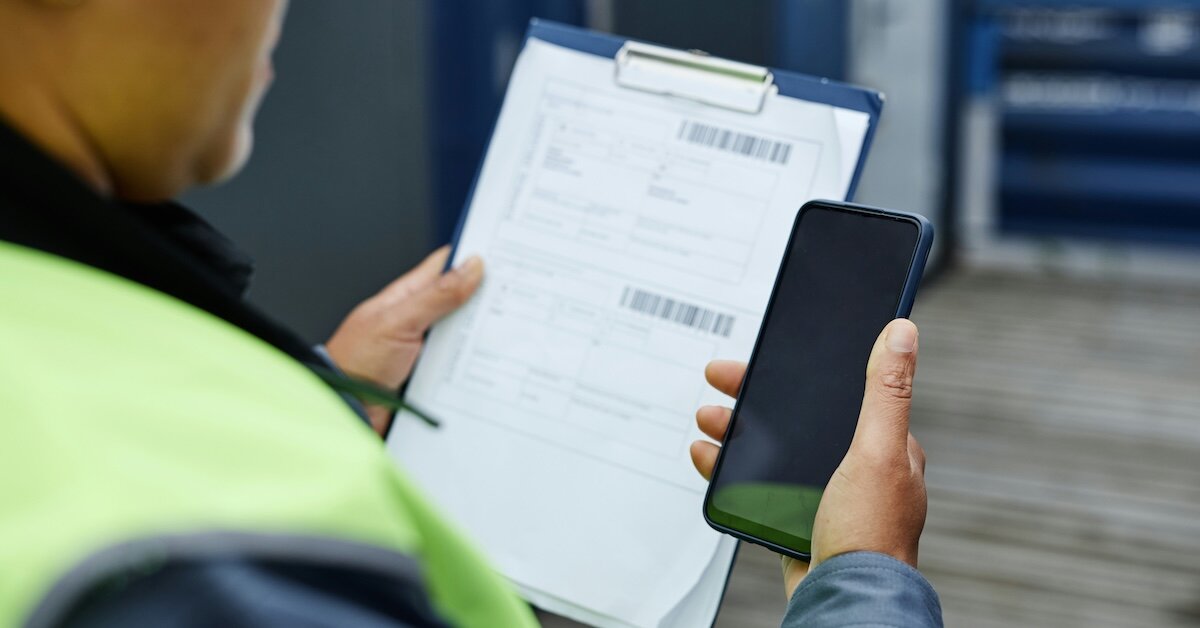The Commercial Real Estate Underwriter’s Checklist: How to Assess Deal Risk
Learn


In commercial real estate, underwriting decisions are only as strong as the data behind them. Appraisers, assessors, analysts, and underwriters spend a significant amount of time piecing together comps, loan data, and ownership records from disconnected sources with varying levels of accuracy. Not to mention, many professionals are working under tight deadlines and often juggling multiple property types, markets and client expectations.
Whether you’re validating a properties value, assessing loan risk, or preparing a compiling a comp set, accuracy matters - and so does speed. A consistent checklist keeps every underwriting project thorough and focused, prevents errors that can lead to incorrect valuations or missed lending risks, and supports transparency with clients, regulators, and internal credit teams.
This may feel sales pitchy, but that’s because we built Crexi Intelligence for precisely this reason: to streamline research and reporting by centralizing everything in one platform so you can value properties faster, back your analysis and support risk assessment.
The following is a step-by-step guide on how best to utilize technology like Crexi Intelligence to ensure consistency and peace of mind for your clients.
Key Takeaways
- Following an underwriting checklist helps avoid oversights and builds credibility with clients and credit teams.
- Always start by confirming ownership and property details to ensure the foundation of your analysis is accurate.
- Comparing financial assumptions against recent sales and lease comps reduces the risk of relying on outdated or overly optimistic projections.
- Evaluating submarket indicators like vacancy trends and rent growth provides essential context beyond the property itself.
- Reviewing debt maturity timelines and validating NOI against market benchmarks are key steps in spotting potential deal risks early.

CRE Underwriting Process Checklist
Here’s a streamlined underwriting process CRE professionals can use, powered by tools inside Crexi Intelligence.
1. Confirm Property and Ownership Details
Start by making sure you’re looking at the right property, and that the ownership information is correct.
Instead of relying solely on public records that may be outdated or incomplete, complement those pieces with Crexi’s verified ownership database. You’ll be able to:
- Confirm legal ownership.
- Identify all portfolio assets tied to a single owner.
- Validate details before proceeding with deeper due diligence.
This is the foundation of property valuation for underwriting - knowing exactly who owns what.
2. Collect Recent Sales and Lease Comps
To assess a property’s current value, compare it with similar assets in the same area. Assembling a comps library can be a costly and time-intensive process, requiring you to pull from various data sources, call landlords and property managers, and even drive by the properties for a closer look.
Crexi Intelligence can help with some of the research lift; using the tool, you can:
- Access 46M+ verified sales comps and lease data.
- View full transaction histories, price trends, and cap rates.
- Project realistic rental income using up-to-date market comps.
Comparing income assumptions against real, recent data is essential for CRE loan risk assessment.
3. Evaluate Market and Submarket Trends
A property doesn’t operate in a vacuum. Market context matters. Good underwriting includes reading the market, not just the property. It’s a key part of your due diligence checklist for CRE needs.
Use Crexi’s map and demographic overlays and search insights to:
- Understand population growth, traffic counts, and income shifts.
- Spot signs of a softening submarket (e.g., rising vacancy or flat rents).
- Guide clients on whether to move forward, wait, or renegotiate

4. Analyze Loan Maturity and CMBS Data
Using tools like Crexi to analyze debt risk can provide a more complete picture of an investment property, especially when underwriting an asset that may need to be refinanced or sold soon.
You’ll be able to:
- Find properties with upcoming loan maturities.
- View CMBS loan data to understand existing debt terms.
- Spot clusters of debt that may trigger sales or indicate distress in a given market.
This data is often overlooked, but it’s crucial for loan underwriting CRE deals. Understanding these trends gives lenders and investors a forward-looking view of risk.
5. Validate NOI and Cash Flow Assumptions
Before finalizing your report, validate the financials.
With Crexi, you can easily compare stated Net Operating Income (NOI) to similar properties. These numbers help you to benchmark expense ratios and rent roll accuracy, as well as flag any numbers that don’t align with market averages.
This step protects everyone involved and reinforces trust in your recommendations. It’s one of the most important commercial real estate underwriting steps.

Red Flags to Consider in Commercial Real Estate Underwriting
Underwriting is about proving the value, but it’s also about spotting the risks. Keep an eye out for these common red flags:
- Vacancy rates higher than the local average
- Loan maturities in soft or declining submarkets
- Sales comps trending downward or fewer recent comps
- NOI projections significantly above market benchmarks
- Mismatch between broker-reported details and verified public records
Any one of these could impact a deal’s success or signal trouble ahead.

How Crexi Intelligence Speeds Up CRE Underwriting
Using the right tools doesn’t just make underwriting easier, it makes it faster, more accurate, and more defensible.
Here’s how Crexi Intelligence helps streamline the process:
All Key Data in One Place
Instead of logging into several different platforms, get everything in one dashboard.
Crexi pulls from trusted third-party and broker reported sources to offer:
- 153M+ property records
- 46M+ comps with transaction history
- Verified ownership and loan maturity data
We may be biased, but this is one of the top tools for underwriting commercial property, especially when speed and precision are priorities.
Time-Saving Reports
Export a polished, professional report in seconds, ready for internal review or client delivery.
With Crexi, underwriters can:
- Generate reports directly from the Intelligence dashboard.
- Customize comps, demographics, and deal notes.
- Save hours on formatting and presentation prep.
It’s a smarter way to turn analysis into action.
Up-to-Date Information
Markets move fast. Crexi’s real-time data refreshes keep your underwriting current.
You’ll avoid relying on old comps, outdated ownership records, or stale demographics. This helps reduce surprises and keeps your CRE loan risk assessment aligned with today’s market, not last quarter’s.

Build Confidence Into Every Deal
Using a repeatable process builds accuracy, efficiency, and trust. With Crexi Intelligence, underwriters, appraisers, and assessors can go from research to recommendation with the data to back it up.
From confirming ownership to projecting income, the right data makes all the difference.
Streamline your underwriting with real-time CRE data. Explore Crexi Intelligence and book a personalized demo today.
The Commercial Real Estate Underwriter’s Checklist: How to Assess Deal Risk
Learn


In commercial real estate, underwriting decisions are only as strong as the data behind them. Appraisers, assessors, analysts, and underwriters spend a significant amount of time piecing together comps, loan data, and ownership records from disconnected sources with varying levels of accuracy. Not to mention, many professionals are working under tight deadlines and often juggling multiple property types, markets and client expectations.
Whether you’re validating a properties value, assessing loan risk, or preparing a compiling a comp set, accuracy matters - and so does speed. A consistent checklist keeps every underwriting project thorough and focused, prevents errors that can lead to incorrect valuations or missed lending risks, and supports transparency with clients, regulators, and internal credit teams.
This may feel sales pitchy, but that’s because we built Crexi Intelligence for precisely this reason: to streamline research and reporting by centralizing everything in one platform so you can value properties faster, back your analysis and support risk assessment.
The following is a step-by-step guide on how best to utilize technology like Crexi Intelligence to ensure consistency and peace of mind for your clients.
Key Takeaways
- Following an underwriting checklist helps avoid oversights and builds credibility with clients and credit teams.
- Always start by confirming ownership and property details to ensure the foundation of your analysis is accurate.
- Comparing financial assumptions against recent sales and lease comps reduces the risk of relying on outdated or overly optimistic projections.
- Evaluating submarket indicators like vacancy trends and rent growth provides essential context beyond the property itself.
- Reviewing debt maturity timelines and validating NOI against market benchmarks are key steps in spotting potential deal risks early.

CRE Underwriting Process Checklist
Here’s a streamlined underwriting process CRE professionals can use, powered by tools inside Crexi Intelligence.
1. Confirm Property and Ownership Details
Start by making sure you’re looking at the right property, and that the ownership information is correct.
Instead of relying solely on public records that may be outdated or incomplete, complement those pieces with Crexi’s verified ownership database. You’ll be able to:
- Confirm legal ownership.
- Identify all portfolio assets tied to a single owner.
- Validate details before proceeding with deeper due diligence.
This is the foundation of property valuation for underwriting - knowing exactly who owns what.
2. Collect Recent Sales and Lease Comps
To assess a property’s current value, compare it with similar assets in the same area. Assembling a comps library can be a costly and time-intensive process, requiring you to pull from various data sources, call landlords and property managers, and even drive by the properties for a closer look.
Crexi Intelligence can help with some of the research lift; using the tool, you can:
- Access 46M+ verified sales comps and lease data.
- View full transaction histories, price trends, and cap rates.
- Project realistic rental income using up-to-date market comps.
Comparing income assumptions against real, recent data is essential for CRE loan risk assessment.
3. Evaluate Market and Submarket Trends
A property doesn’t operate in a vacuum. Market context matters. Good underwriting includes reading the market, not just the property. It’s a key part of your due diligence checklist for CRE needs.
Use Crexi’s map and demographic overlays and search insights to:
- Understand population growth, traffic counts, and income shifts.
- Spot signs of a softening submarket (e.g., rising vacancy or flat rents).
- Guide clients on whether to move forward, wait, or renegotiate

4. Analyze Loan Maturity and CMBS Data
Using tools like Crexi to analyze debt risk can provide a more complete picture of an investment property, especially when underwriting an asset that may need to be refinanced or sold soon.
You’ll be able to:
- Find properties with upcoming loan maturities.
- View CMBS loan data to understand existing debt terms.
- Spot clusters of debt that may trigger sales or indicate distress in a given market.
This data is often overlooked, but it’s crucial for loan underwriting CRE deals. Understanding these trends gives lenders and investors a forward-looking view of risk.
5. Validate NOI and Cash Flow Assumptions
Before finalizing your report, validate the financials.
With Crexi, you can easily compare stated Net Operating Income (NOI) to similar properties. These numbers help you to benchmark expense ratios and rent roll accuracy, as well as flag any numbers that don’t align with market averages.
This step protects everyone involved and reinforces trust in your recommendations. It’s one of the most important commercial real estate underwriting steps.

Red Flags to Consider in Commercial Real Estate Underwriting
Underwriting is about proving the value, but it’s also about spotting the risks. Keep an eye out for these common red flags:
- Vacancy rates higher than the local average
- Loan maturities in soft or declining submarkets
- Sales comps trending downward or fewer recent comps
- NOI projections significantly above market benchmarks
- Mismatch between broker-reported details and verified public records
Any one of these could impact a deal’s success or signal trouble ahead.

How Crexi Intelligence Speeds Up CRE Underwriting
Using the right tools doesn’t just make underwriting easier, it makes it faster, more accurate, and more defensible.
Here’s how Crexi Intelligence helps streamline the process:
All Key Data in One Place
Instead of logging into several different platforms, get everything in one dashboard.
Crexi pulls from trusted third-party and broker reported sources to offer:
- 153M+ property records
- 46M+ comps with transaction history
- Verified ownership and loan maturity data
We may be biased, but this is one of the top tools for underwriting commercial property, especially when speed and precision are priorities.
Time-Saving Reports
Export a polished, professional report in seconds, ready for internal review or client delivery.
With Crexi, underwriters can:
- Generate reports directly from the Intelligence dashboard.
- Customize comps, demographics, and deal notes.
- Save hours on formatting and presentation prep.
It’s a smarter way to turn analysis into action.
Up-to-Date Information
Markets move fast. Crexi’s real-time data refreshes keep your underwriting current.
You’ll avoid relying on old comps, outdated ownership records, or stale demographics. This helps reduce surprises and keeps your CRE loan risk assessment aligned with today’s market, not last quarter’s.

Build Confidence Into Every Deal
Using a repeatable process builds accuracy, efficiency, and trust. With Crexi Intelligence, underwriters, appraisers, and assessors can go from research to recommendation with the data to back it up.
From confirming ownership to projecting income, the right data makes all the difference.
Streamline your underwriting with real-time CRE data. Explore Crexi Intelligence and book a personalized demo today.









